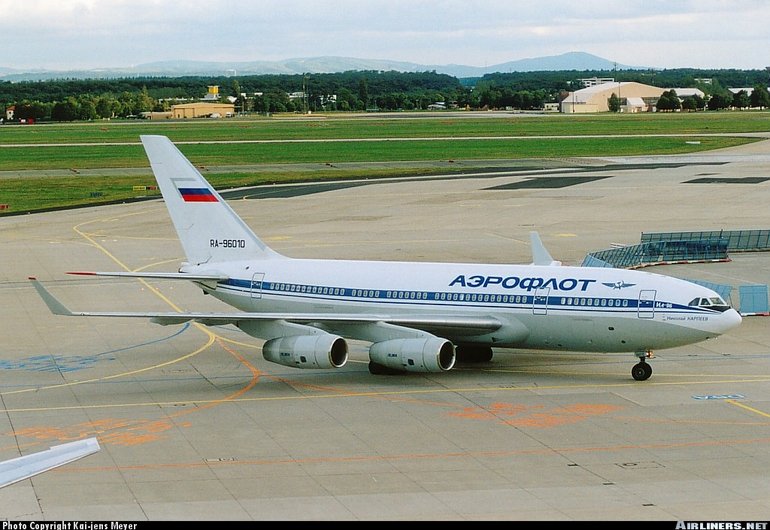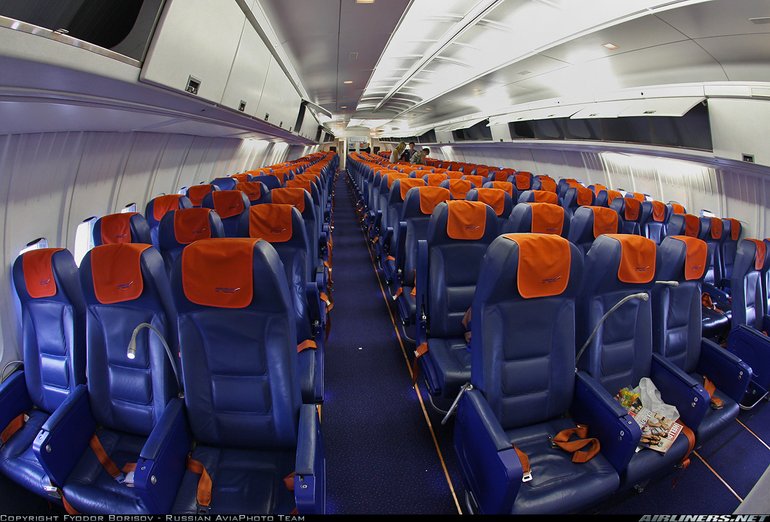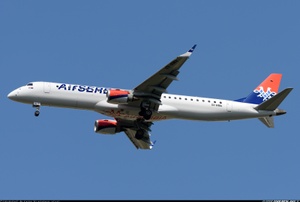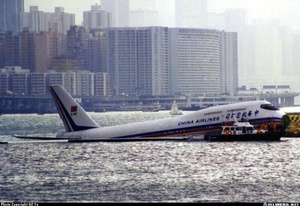Ilyushin Il-96-300
Details
Country of Origin
Russia
Type
Long range widebody airliner
History
Despite resembling the larger Il-86, the Il-96-300 is essentially a new design, incorporating a number of advanced technologies and new engines aimed at improving on the uncompetitive Il-86.
Development of Russia's second widebody airliner began in the mid 1980s, resulting in the Il-96's first flight on September 28 1988. Two other flying prototypes were built, as were two airframes to be used for static and ground testing. Commonality in some areas with the Il-86 allowed a 1200 flight hour certification program, resulting in Russian certification being awarded on December 29 1992. The Il-96-300 entered service with Aeroflot Russian International Airlines the following year.
The Il-96-300 is based on the older and larger Il-86, but it features a number of new technologies previously the exclusive domain of modern western built airliners. These include a triplex flybywire flight control system, a six screen EFIS flightdeck (however three flightcrew are retained, and not two as on most modern western designs), some composite construction (including the flaps and main deck floors), and winglets. The modern PS-90 turbofans are designed to comply with ICAO Stage 3 noise limits (something the Il-86 cannot conform to) and the Il-86's unique lower deck airstair design was deleted.
Perhaps the Il-96-300's greatest claim to fame though is that it forms the basis for the stretched and westernised (with Pratt & Whitney PW-2337s and Collins digital avionics) Il-96M and Il-96T, described separately.
Powerplants
Four 160.0kN (35,970lb) Aviadvigatel (Soloviev) PS-90A turbofans.
Performance
Cruising speed 850 to 900km/h (460 to 485kt). Long range cruising speed M0.78, hi-speed cruising M0.80, max speed M0.84. Range with max payload of 37,5 tonne (82,675lb) and reserves 9000km (4850nm), with 30 tonne (66,140lb) payload 10,000km (5400nm), with 15 tonne (33,070lb) payload 12,000km (6500nm).
Weights
Operating empty 121,500kg (267,860lb), max takeoff 250,000kg (551,160lb), max landing 183,000kg (403,450lb), max tankage 150,000liters (39,625gallon).
Dimensions
Wing span over winglets 60.11m (197ft 3in), length 55.35m (181ft 7in), height 17.55m (57ft 7in). Wing area 391.6m2 (4215.0sq ft).
Capacity
Flightcrew of three, comprising two pilots and flight engineer. Basic single class seating for 300 at nine abreast in two cabins. Three class arrangement seats 235 comprising 22 first class at six abreast and 102cm (40in) pitch, 40 business class at eight abreast and 90cm (35in) pitch, and 173 economy class at nine abreast and 87cm (34in) pitch. Forward lower freight hold accommodates six LD3 containers or pallets (9000kg/19,840lb), rear hold accommodates 10 LD3s or pallets (15,000kg/33,070lb).
Production
Approximately 15 Il-96-300s have been built, of which six are in service with Aeroflot and three with Domodedovo Civil Aviation Enterprise and others in Russian government service (including one used as a presidential transport).
Related Links
Ilyushin Il-96-300
The backbone of this section is from the The
International Directory of Civil Aircraft by Gerard Frawley
and used with permission. To get your own copy of the book
click here.




















